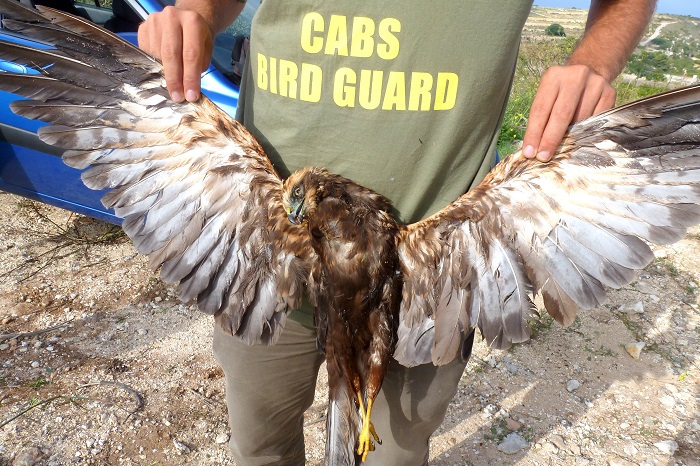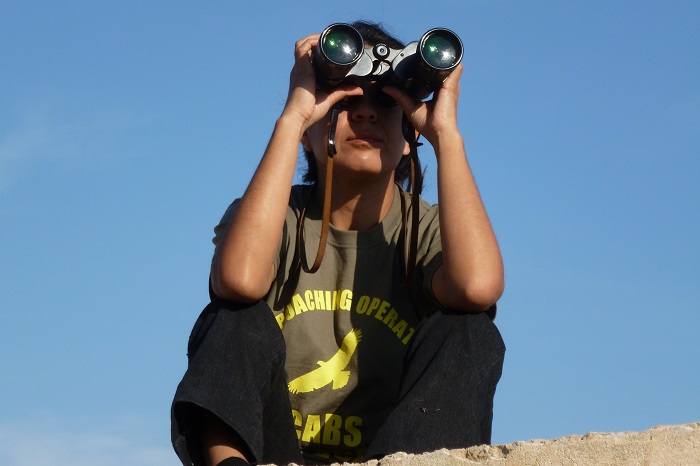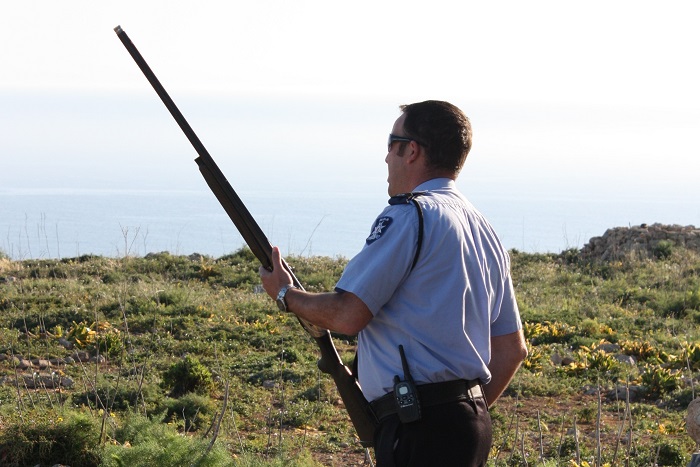Operations to protect birds of prey and storks

On Malta trophy hunting for birds of prey, storks, herons and other large birds continues even today. The birds end up as specimens in taxidermy collections - many collectors have hundreds of stuffed animals in their showcases, males, females, juveniles and various colour morphs of every species.
In spring and autumn the poachers mingle with the hunters who legally go hunting for turtle doves, quails, thrushes and various waders and water birds. At remote coastal areas, along well-known flight routes and around roosting sites, they lurk in waiting for the protected birds to arrive. Marsh and montagu harriers, honey buzzards and hobbies are often shot, but above all rare species such as pallid harriers, short-toed eagles, ospreys, black storks and flamingos often have little chance of leaving the island alive. When the coveted rarities arrive on the island, the information is quickly spread in closed groups and on social media, so that within a short time the poachers are out in force.

The Committee Against Bird Slaughter (CABS) has been running our bird camps on Malta since 2001. Each spring (April) and autumn (September) around 20 participants from all over Europe come together for 2-3 weeks on Malta and its small neighbouring island Gozo. In the morning and evening the CABS teams patrol the well-known passage and roosting sites and deter many poachers with our visible presence. Anyone who shoots at protected species risks being filmed by us. When crimes are observed, the committee teams call the environmental police (ALE), which regularly patrols the poaching hot spots, and assist the officers in their work.
Hunters convicted of poaching receive heavy fines and often lose their hunting licences for life, and even risk imprisonment. In cooperation with our partner association Birdlife Malta and the environmental police, we have been able to reduce the number of incidents in this way. However, remote areas in the west and south of the island and inaccessible areas around the airport are still a death trap for large birds.

Even though bird-trapping of songbirds and waders peaks outside the period of our large bird protection camps, we still catch numerous poachers every year in April and September, using cage traps, set nets, snares and ground nets or illegal decoys.
The operations against poaching in Malta are not without danger. Especially in years when hunting laws have been tightened, our volunteer members have been victims of attacks by frustrated hunters. Most of the time it is just verbal attacks and insults, but in remote areas we have also been physically attacked and our vehicles badly damaged. Fortunately, such acts of violence have been steadily decreasing for years.
The number of cases of illegal hunting of protected birds that we have observed during the bird protection camps has been declining for years. At the beginning of our campaigns at the turn of the millennium, thousands of birds of prey were shot - during each camp, our teams rountinely documented well over 100 cases of protected birds being shot or shot at and the discovery of carcasses of hunting victims carelessly discarded or hidden under stones. Meanwhile, the notorious poachers have retreated to more concealed areas where we now carry out targeted monitoring the bird protection camps.






